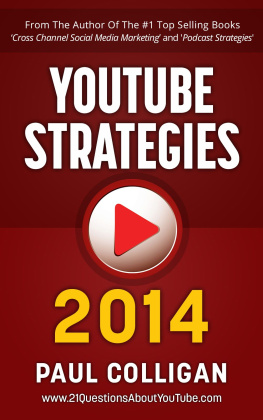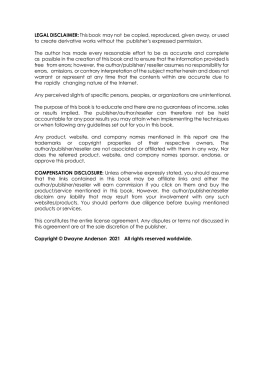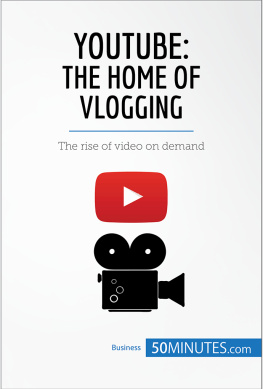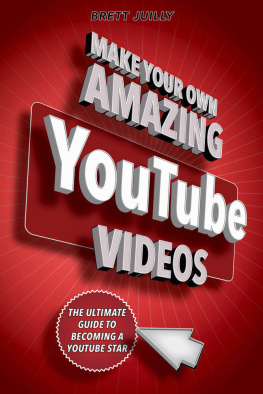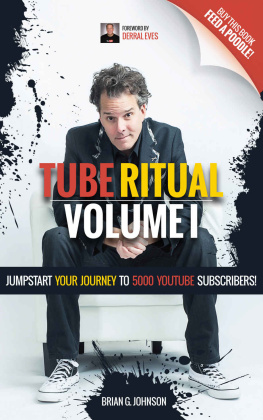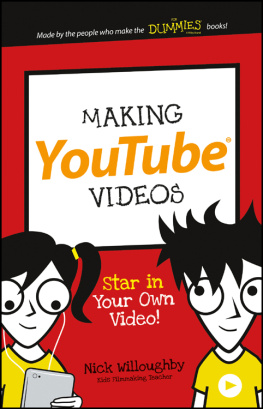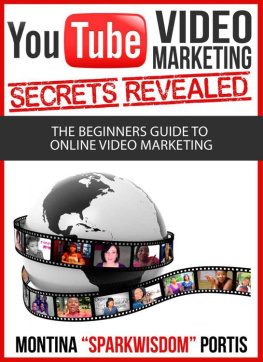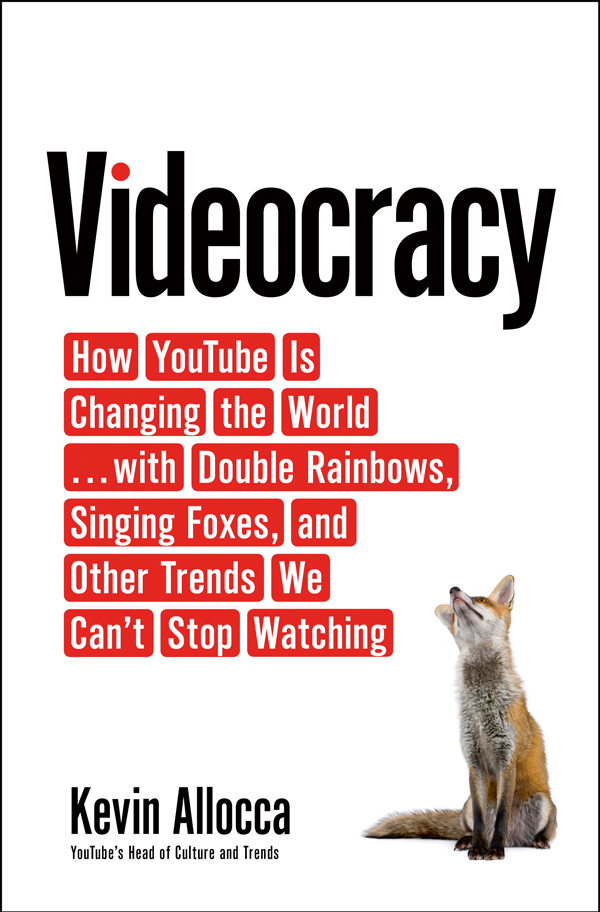Contents
Guide
Pagebreaks of the print version


For JoeA48


Contents
CHAPTER 1
At the Zoo
CHAPTER 2
Creating Entertainment in the Auto-Tune Era
CHAPTER 3
The Language of Remixing and the Pure Joy of a Cat Flying Through Space
CHAPTER 4
Some Music That I Used to Know
CHAPTER 5
The Ad Your Ad Could Smell Like
CHAPTER 6
The World Is Watching
CHAPTER 7
I Learned It on YouTube
CHAPTER 8
Niche: The New Mainstream
CHAPTER 9
Scratching the Itch
CHAPTER 10
Going Viral
CHAPTER 11
What Videos Do for Us
CHAPTER 12
The New Talent
Beams of sunlight streaming into his California home on the edge of Yosemite National Park prompted Paul Bear Vasquez, then forty-seven, to grab the camera that was almost always by his side and step outdoors, where two spectacular rainbows extended across the giant canyon in front of him. Hed uploaded hundreds of videos to his YouTube channel at that point, but as he recorded the scene in front of him, he knew he was capturing something special. It was his off-camera reaction, though, rather than the rainbows, that made his video a cultural phenomenon. Over its three minutes and thirty seconds, we hear Bear dramatically unraveling in the presence of the majestic rainbows. Heres a partial transcript:
Whoa, thats a full rainbow all the way. Double rainbow, oh my God. Its a double rainbow, all the way. Whoa, thats so intense Its so bright, oh my God Its so bright and vivid! OH! AHH! AHHH! Its so beautiful! [ Sobbing in happiness ] Oh my God. Oh my God, what does it mean? Tell me. [ More crying ] Too much. Tell me what it means. Oh my God, its so intense. Oh. Oh. Oh my God.
The first time I stumbled across the Double Rainbow video (officially titled Yosemitebear Mountain Double Rainbow 1-8-10), Id yet to start a career in YouTube video watching. I was taking some vacation time from my job as a news-industry reporter to teach at a high school summer acting camp. While Bear had posted the video in January 2010, it hadnt taken off until six months later, when Jimmy Kimmel famously shared it on Twitter: my friend Todd has declared this funniest video in the worldhe might very well be right.
I, like Jimmy Kimmels friend Todd, couldnt get enough of Bears hysterical reaction to the double rainbow. Over the course of that week, I must have watched it twenty times. The staff showed it on a big screen for the students before a lecture. They loved it too, and Its so intense! became the campers new favorite catchphrase. The video is a document of one mans exuberant reaction, a suspended moment of pure joy. It embodies an emotion we love to share.
Since then, Ive hung out with Bear a few timesincluding at an internet-meme symposium at MITand Double Rainbow is Bear. It is a complete encapsulation of who he is. The video is silly and raw and overflowing with an almost unnatural intensity of feeling, and Bear is all of those things too. You dont see me in it, youre seeing it through me, he liked to say. You experienced what I experienced. People have asked me if he understands why people find it funnythe subtext being that we are laughing at him, not with himand he does. But even laughing at him, youre sharing the moment with him. He told me that it is his mission to spread a message of happiness, spirituality, and positivity throughout the world and he believes the video helps him achieve that. Its what he calls his gift to humanity. Every time we watch it, share it, parody it, or sing it, we join Bears personal mission.
Years later, Double Rainbow remains my pick for the single best video on YouTube. Somewhere in between Bears joyous exclamations and incoherent sobbingand our laughterlie some important truths. We are part of an entirely new era of creativity, one driven by people like Bear who have something they want to share with us and people like the kids at that camp who want to join in those experiences and create new ones of their own. Its a culture shaped by all of us.
I was pretty much a 90s kid. I got up for Ninja Turtles on Saturday mornings. Tuned in to TRL to figure out which bands I was supposed to hate. Rented movies from Blockbuster Video. Watched the sensationalized South Florida local news with my family during dinner until my mother complained and we turned it off. I had way more entertainment options than my parents did growing up.
In the 1950s, when my parents were kids, the media biz had become more influential than ever thanks to the growing reach of radio and television, but participating in it required a lot of money. Broadcast antennas, film stock, and presses that could generate physical media, such as newspapers or records, didnt come cheap. A single RCA TK-41 television camera, one of the first to broadcast in color, cost approximately $50,000 in 1959 ($417,485 in todays dollars). Given the massive expense of productions, and the necessity of advertising dollars or box-office sales to offset those costs, pretty much every piece of mass-consumed entertainment originated from a handful of broadcast networks, movie studios, and record companies. To maintain economic viability, most of what they created sought to appeal to as many of us as possible.
This model was not necessarily a bad thing. It brought us many of the most important cultural touchstones of the twentieth century: the Nixon-Kennedy debates, the Beatles on The Ed Sullivan Show , The Godfather , and Gone with the Wind . It ensured that what was created was properly categorized (into audience-identifiable genres) and contextualized (through standardized marketing and branding), and that all of it was of generally high quality. But sometimes the result was a product that was bland and homogenized. Popular culture van den Haag back in 1957, is manufactured by one groupin Hollywood or New Yorkfor sale to an anonymous mass market. The product must meet an average of taste and it loses in spontaneity and individuality what it gains in accessibility and cheapness. Youch.
The emerging media of today is, in some ways, more akin to the culture that existed before any of us were bornprior to the Industrial Revolution and the advent of mass mediawhen creativity was expressed through folk art that reflected the distinct realities, passions, and fears of the common people, not a small elite group. Todays technology once again allows individuals to shape our popular art and entertainment, and this time, theywecan do it on a massive scale.
When I started my job tracking trends at YouTube in 2010, the first thing I noticed was that nothing seemed to make sense: The most popular channel starred a sixteen-year-old boy with a sped-up, high-pitched voice; the biggest popstar in the world (Justin Bieber) had gotten his start because of some videos he recorded in his bedroom; and somehow at the same time, Barack Obama had been dubbed the YouTube President. Something big was happening. But it was chaos. My job as the platforms first trends manager was to figure out what it all meant.
This book explains how the random, unpredictable mess I first encountered in 2010 is actually the totally logical product of our new creative freedom in this era of self-expression. Sure, along the way well dig into how videos go viral, why some creators find such large audiences, and what made the Harlem Shake meme a thing. But this book is really about what these phenomena say about us and the new influence we wield.



